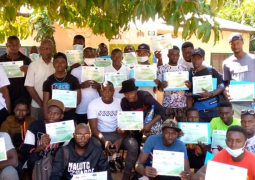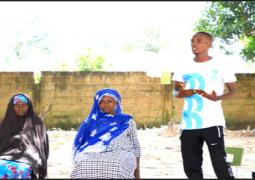
The Gambia is a youthful country.
Almost 60% of its 2.2 million people are under the age of 25 (Index Mundi, 2021), and 18- to 35-year-olds make up 58% of its registered voters (Taylor, 2021).
Does the government prioritise the needs of young people?
Gambian youth face particular challenges in a struggling economy with high unemployment (DW, 2021). The Global Youth Development Index ranks the Gambia 139th out of 181 countries on its efforts.
The quest to address these challenges is captured in the vision of the country’s National Youth Policy, which seeks to “empower and render the Gambian youth capable and willing to make well-informed, sustainable and meaningful life choices” through education, youth development investment, and initiatives to confront the country’s long tradition of emigration (Ministry of Youth and Sports, 2019).
Projects by national and international agencies target specific issues pertaining to the youth. For instance, the Gambia Youth Empowerment Project (YEP) was established in January 2017 to address the issue of emigration by improving the skills and employability of potential and returning migrants (National Youth Council, 2017).
Afrobarometer survey findings show that Gambian youth have more education than their elders but are also more likely to be unemployed.
Health and management of the economy top the list of the most important problems that young Gambians want their government to address.
Among Gambian adults of all ages, a majority are willing to pay higher taxes to fund programs to help young people, with job creation as the top priority for additional government investment.
Though dominant in numbers, Gambia’s youth are less likely than their elders to participate in change-making activities such as voting and civic engagement.
The Gambia still faces considerable challenges in respect to reducing poverty.
As the result of its narrow economic base and its reduced internal market, the country will continue to rely heavily on the productivity of its citizens to reverse the cycle that keeps families in poverty generation after generation.
Poverty reduction is a complex equation that involves improvements in job creation, especially for high-skilled and productive employment, as well as improvements in human capital levels to ensure that citizens are able to take advantage of employment opportunities.
Currently, however, low human capital levels greatly limit the productivity and employment outcomes of the population, as evidenced by the fact that a majority continues to work in subsistence agriculture, especially in rural areas.
Nearly 60 percent of the poor in The Gambia are under the age of 20 years.
Youth face significant challenges with respect to employment outcomes, such as a very difficult transition from school to work and very low levels of education and training.
Source-Youth news





